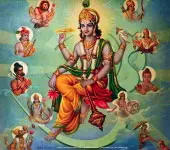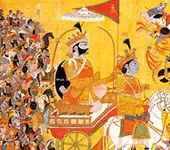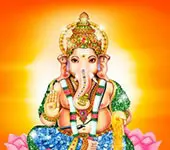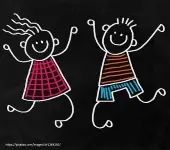Transcript
(Click here to read more)
Once upon a time, there was a mother hen. She once got a bunch of paddy. You know paddy, right? You get rice from paddy. We all enjoy rice on our table. But a lot of hard work goes behind getting this rice to our table. Lot of people work hard to get us food and keep us strong and healthy, do you know that? So, our mother hen got a bunch of paddy from the field. First of all, the grains should be separated from the stalk stem of the paddy plant. For this, the farmers....
Transcript
(Click here)
Once upon a time, there was a mother hen.
She once got a bunch of paddy.
You know paddy, right?
You get rice from paddy.
We all enjoy rice on our table.
But a lot of hard work goes behind getting this rice to our table.
Lot of people work hard to get us food and keep us strong and healthy, do you know that?
So, our mother hen got a bunch of paddy from the field.
First of all, the grains should be separated from the stalk stem of the paddy plant.
For this, the farmers hold the bunch of stalks together and beat them on the ground again and again.
This is called threshing.
Then, the grains get separated from the stalk.
But, mother hen was getting old.
She needed some help.
There were some young mice who were her neighbours.
She called out to them for help.
Young boys, come help me with this paddy.
They said: no mother hen, we have to play, you do it yourself.
So, mother hen did that herself.
Then from the grains of paddy, the husk or hull should be separated.
It is also called shaf.
This is called milling.
For this, the grains are placed in a stone mortar and with a long wooden pestle, they are pounded again and again.
After some time the shaf or husk or hull gets separated from the grain.
This also requires a lot of hard work.
Mother hen again called out to the young mice for help.
They said: no, mother hen, we are busy playing, you do it yourself.
Now after milling, the rice grains should be cleaned, the shaf separated through milling should be removed.
For this, a winnow is used.
A winnow is flat and is usually made from cane.
The milled paddy is kept on it and it is thrown up again and again.
When you do it many times, the rice and the husk get separated.
And part of the husk gets blown away by the wind also.
The mother hen again called out to the young mice for help.
They said: no, you do it yourself.
The mother hen did that also herself.
Then the grains were ready.
Then the mother hen again called out: let’s cook the rice, fetch some water.
The mice said: we are busy, do that yourself.
The hen cooked the rice.
The aroma of the rice cooking started spreading in the air.
The mice were hungry.
When the aroma reached their noses they felt more hungry.
They surrounded the mother hen and said: mother hen, mother hen, we are hungry, give us some rice.
She asked: who pounded the bunch of paddy?
The mice said: mother hen.
She asked: who milled the paddy grain?
The mice said: mother hen.
She asked: who cleaned the rice?
The mice said: mother hen.
She asked: who cooked the rice?
The mice said: mother hen.
She said: Then mother hen alone will eat the rice also.
The moral of the story is- don’t expect others to do your work.
You have no right to enjoy something for which you have not done any work.
A lot of people put in efforts because of which our surroundings are clean and we enjoy their benefit.
We should also contribute to this.
A lot of people work hard only for the benefit of others and society as a whole and we all enjoy their benefit.
We should also contribute to the goodness of the society, keep the surroundings clean, keep it safe.
Never take benefit of something towards which you have not contributed in one way or the other.
Help your parents in household chores in whichever way you can.
Keep your study room and table clean yourself.
When you enjoy the benefit of something to which you have contributed, you will feel much more satisfied.
Recommended for you
Vilwa fruits are very important in the worship Lakshmi Devi
 Click here to know more..
Click here to know more..
When do a teacher and student become enemies of each other?
 Click here to know more..
Click here to know more..
Vakratunda Stava

namastubhyam ganeshaaya brahmavidyaapradaayine. yasyaagastyaayate naama vighnasaagarashoshane. namaste vakratund'aaya trinetram dadhate namah'. chatur....
Click here to know more..
Children's Section
Children's stories
Click on any topic to open
- 114 The Miser's Legacy - His Daughter's Ingenious Plan
- 113 Who are Sanyasis ?
- 112 From Vanity to Virtue - Priya's Transformation
- 111 The Miser's Gold
- 110 Rishis - Nara And Narayana
- 109 Misconception Cured
- 108 Tiger Learns An Important Lesson
- 107 Why Bhartruhari Relinquished His Throne
- 106 The Magical Bird
- 96 Self Criticism
Please wait while the audio list loads..
30
Ganapathy
Shiva
Hanuman
Devi
Vishnu Sahasranama
Mahabharatam
Practical Wisdom
Yoga Vasishta
Vedas
Rituals
Rare Topics
Devi Mahatmyam
Glory of Venkatesha
Shani Mahatmya
Story of Sri Yantra
Rudram Explained
Atharva Sheersha
Sri Suktam
Kathopanishad
Ramayana
Mystique
Mantra Shastra
Bharat Matha
Bhagavatam
Astrology
Temples
Spiritual books
Purana Stories
Festivals
Sages and Saints
